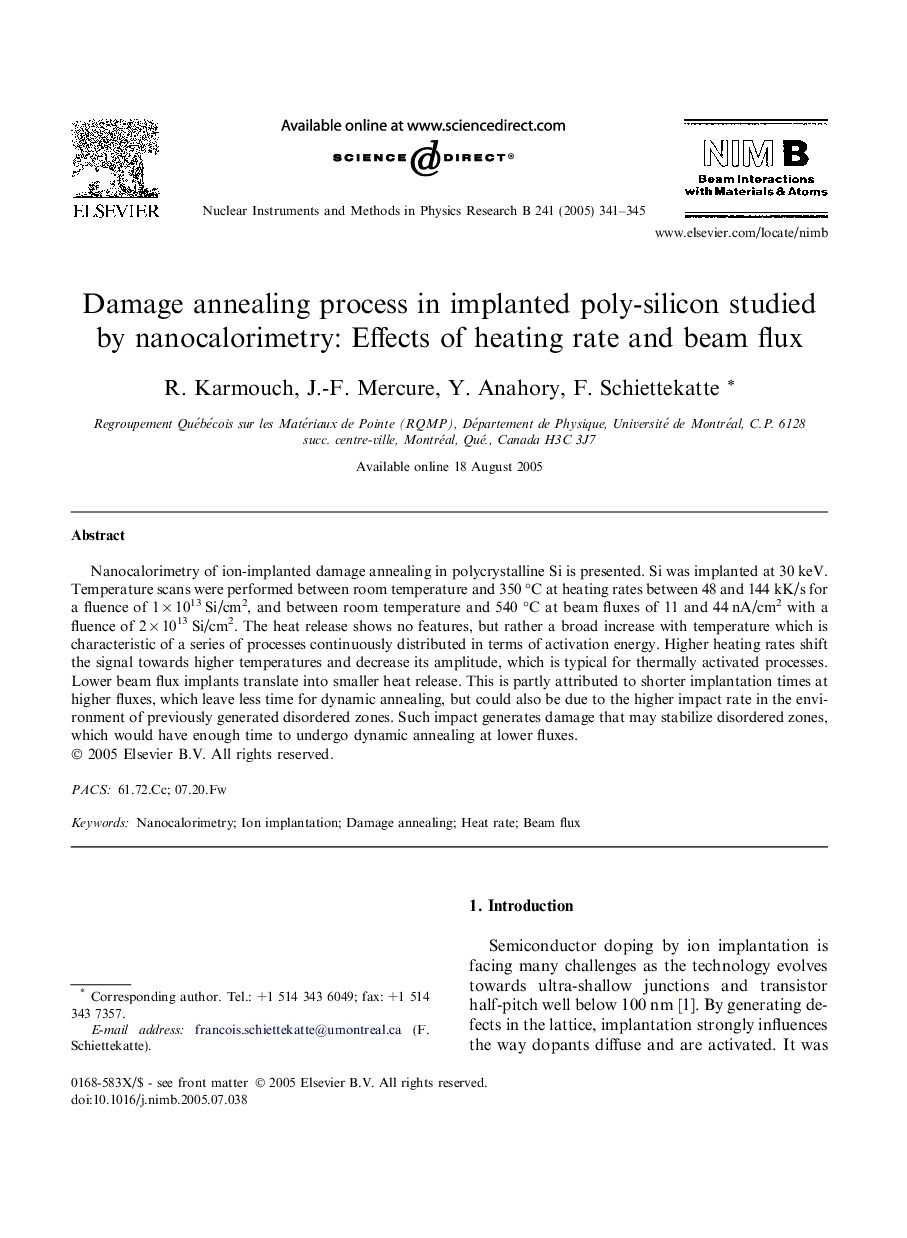| Article ID | Journal | Published Year | Pages | File Type |
|---|---|---|---|---|
| 9817461 | Nuclear Instruments and Methods in Physics Research Section B: Beam Interactions with Materials and Atoms | 2005 | 5 Pages |
Abstract
Nanocalorimetry of ion-implanted damage annealing in polycrystalline Si is presented. Si was implanted at 30 keV. Temperature scans were performed between room temperature and 350 °C at heating rates between 48 and 144 kK/s for a fluence of 1 Ã 1013 Si/cm2, and between room temperature and 540 °C at beam fluxes of 11 and 44 nA/cm2 with a fluence of 2 Ã 1013 Si/cm2. The heat release shows no features, but rather a broad increase with temperature which is characteristic of a series of processes continuously distributed in terms of activation energy. Higher heating rates shift the signal towards higher temperatures and decrease its amplitude, which is typical for thermally activated processes. Lower beam flux implants translate into smaller heat release. This is partly attributed to shorter implantation times at higher fluxes, which leave less time for dynamic annealing, but could also be due to the higher impact rate in the environment of previously generated disordered zones. Such impact generates damage that may stabilize disordered zones, which would have enough time to undergo dynamic annealing at lower fluxes.
Related Topics
Physical Sciences and Engineering
Materials Science
Surfaces, Coatings and Films
Authors
R. Karmouch, J.-F. Mercure, Y. Anahory, F. Schiettekatte,
